L.C.M. Word Problems, H.C.F. Word problems, Stepwise Solutions for NCERT Class 6 Mathematics Chapter 3 – Playing with Numbers – Exercise 3.7, Class 6th Maths solutions wikipedia, Questions and Answers for NCERT Mathematics Class 6, Questions and Solutions for NCERT Mathematics Class Sixth Exercise 3.7 of Chapter 3, CBSE Class sixth Maths Solutions, Questions and Solutions for NCERT Class 6th Mathematics Chapter 3 – Playing with Numbers – Exercise 3.7 Solutions, Detailed Solutions for NCERT Class 6th Mathematics Chapter 3 – Playing with Numbers – Exercise 3.7, Questions and Solutions for NCERT Class 6 Mathematics Chapter 3 – Playing with Numbers – Exercise 3.7, Stepwise Solutions for NCERT Class 6 Mathematics Exercise 3.7 Solutions for NCERT Class 6 Mathematics Chapter 2, Stepwise and detailed solutions for NCERT Class 6 Chapter 3 Exercise 3.7, Detailed Solutions for Solutions for NCERT Class 6 Mathematics, NCERT Class 6th Mathematics Chapter 3 – Playing with Numbers – Exercise 3.7, Chapter 3 – Playing with Numbers – Exercise 3.7 NCERT Solutions.
Questions and Solutions for NCERT Class 6th Mathematics Chapter 3 – Playing with Numbers – Exercise 3.7
1. Renu purchases two bags of fertiliser of weights 75 kg and 69 kg. Find the maximum value of weight which can measure the weight of the fertiliser exact number of times.

2. Three boys step off together from the same spot. Their steps measure 63 cm, 70 cm and 77 cm respectively. What is the minimum distance each should cover so that all can cover the distance in complete steps?

3. The length, breadth and height of a room are 825 cm, 675 cm and 450 cm respectively. Find the longest tape which can measure the three dimensions of the room exactly.

4. Determine the smallest 3-digit number which is exactly divisible by 6, 8 and 12.

5. Determine the greatest 3-digit number exactly divisible by 8, 10 and 12.
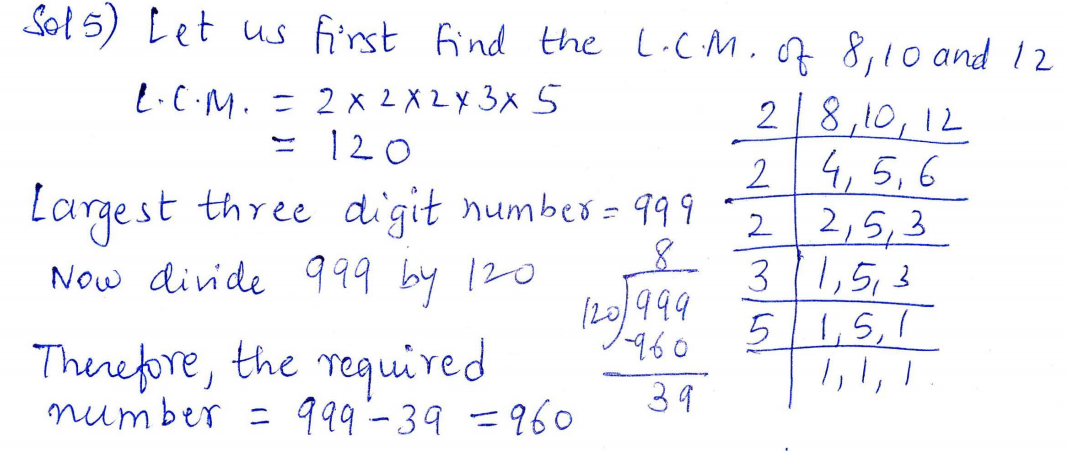
6. The traffic lights at three different road crossings change after every 48 seconds, 72 seconds and 108 seconds respectively. If they change simultaneously at 7 a.m., at what time will they change simultaneously again?
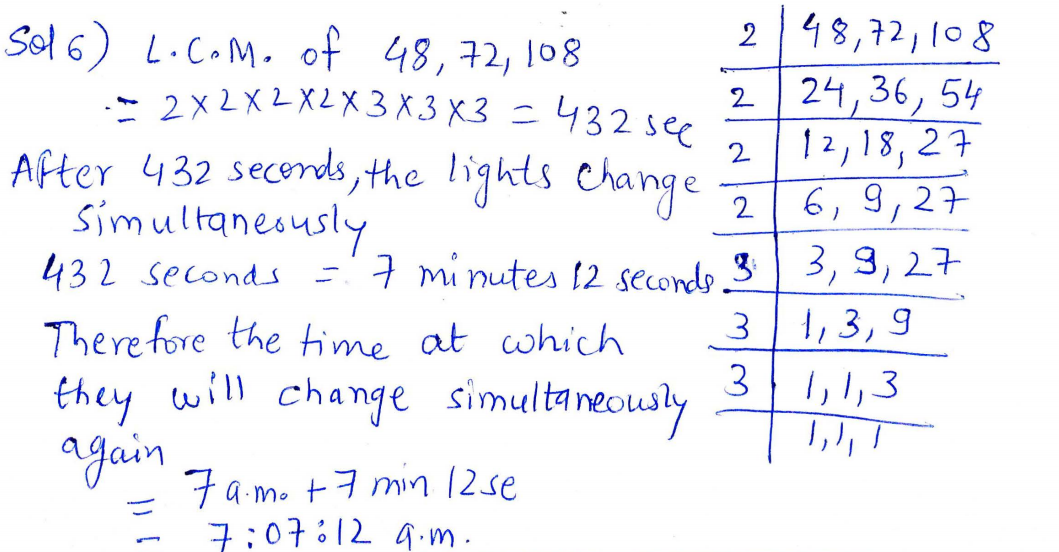
7. Three tankers contain 403 litres, 434 litres and 465 litres of diesel respectively. Find the maximum capacity of a container that can measure the diesel of the three containers exact number of times.
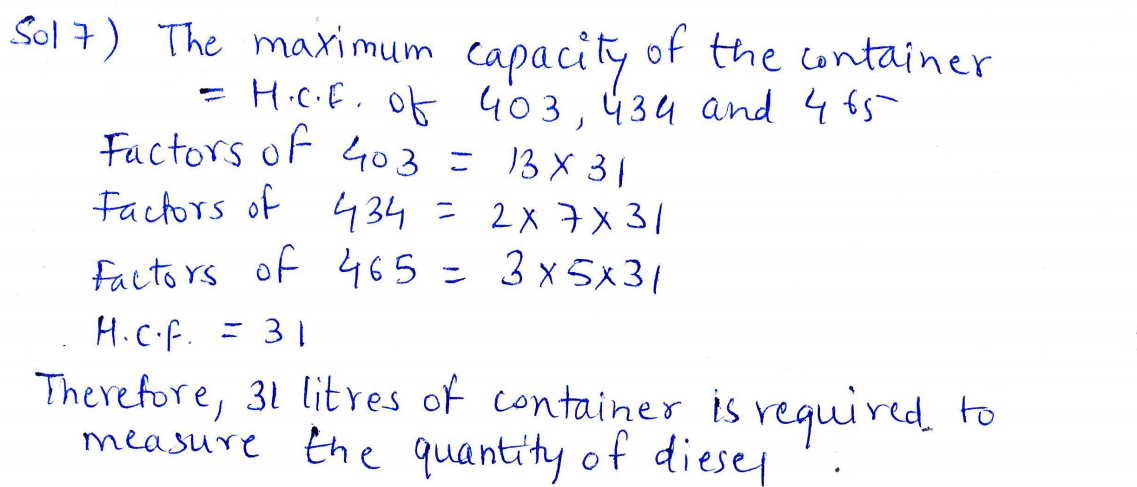
8. Find the least number which when divided by 6, 15 and 18 leave remainder 5 in each case.

9. Find the smallest 4-digit number which is divisible by 18, 24 and 32.
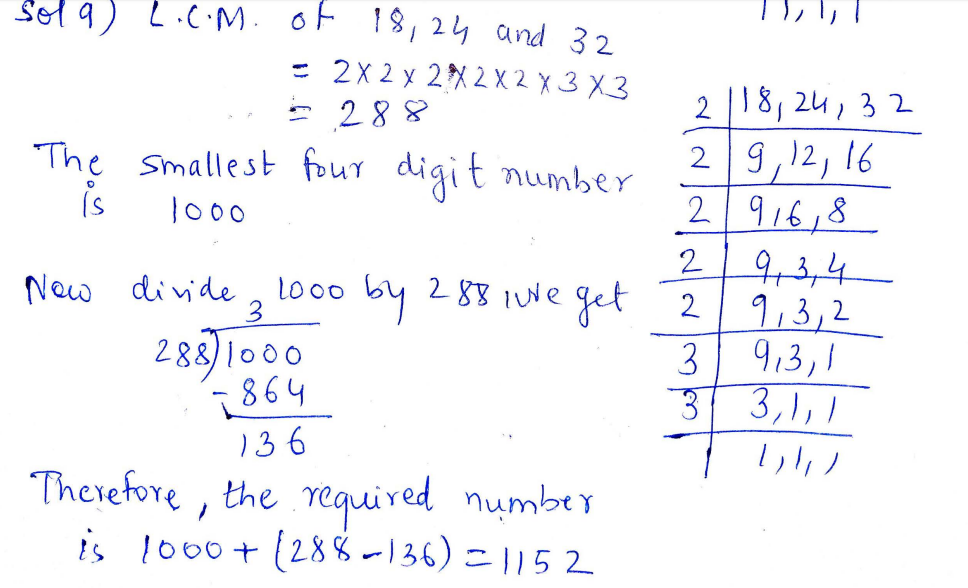
10. Find the LCM of the following numbers : Observe a common property in the obtained LCMs. Is LCM the product of two numbers in each case?
(a) 9 and 4

(b) 12 and 5

(c) 6 and 5

(d) 15 and 4
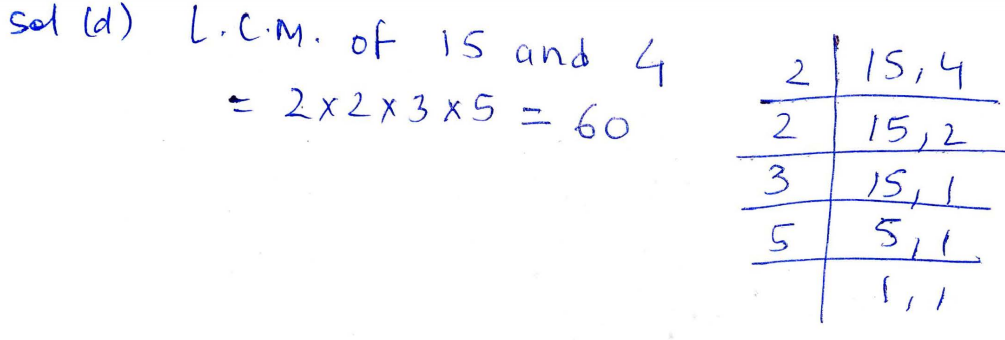
From the above cases we can conclude that the L.C.M. is the product of the two numbers in each case and also the L.C.M. is a multiple of 3.
11. Find the LCM of the following numbers in which one number is the factor of the other. What do you observe in the results obtained?
(a) 5, 20

(b) 6, 18

(c) 12, 48

(d) 9, 45
From above cases we can say that if the smaller number is the factor of the larger number than the L.C.M. is equal to the larger number.
You can find the solutions for Class 6 Mathematics previous exercises from here
- Playing with Numbers – Exercise 3.6 Solutions
- Playing with Numbers – Exercise 3.5 Solutions
- Playing with Numbers – Exercise 3.4 Solutions
- Playing with Numbers – Exercise 3.3 Solutions
- Playing with Numbers – Exercise 3.2 Solutions
- Playing with Numbers – Exercise 3.1 Solutions
- Whole Numbers – Exercise 2.3 Solutions
- Whole Numbers – Exercise 2.2 Solutions
- Whole Numbers – Exercise 2.1 Solutions
- Knowing Our Numbers Solutions Exercise 1.3 Solutions
- Knowing Our Numbers Solutions Exercise 1.2 Solutions
- Knowing Our Numbers Solutions Exercise 1.1 Solutions

